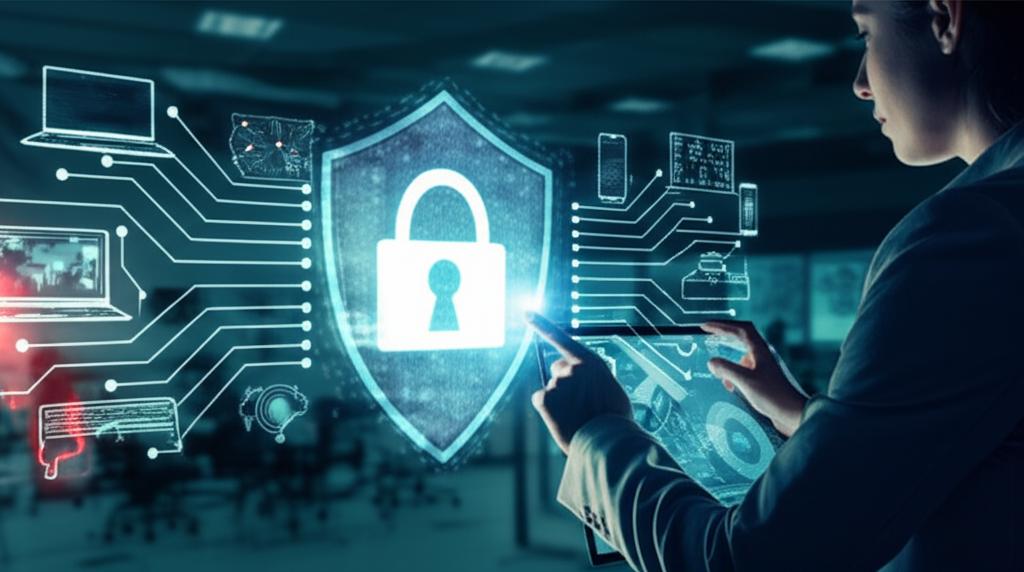Fortifying Your Digital Frontier: The Ultimate Guide to Enterprise Endpoint Security
Understanding Enterprise Endpoint Security in the Modern Threat Landscape
In today’s interconnected world, every device connected to your network—from laptops and smartphones to servers and IoT devices—represents a potential entry point for cyber attackers. This expansive attack surface makes robust Enterprise Endpoint Security not just a best practice, but an absolute necessity for businesses of all sizes. It’s the critical layer of defense that protects your organization’s sensitive data and ensures operational continuity against an ever-evolving array of cyber threats.
What Exactly is Enterprise Endpoint Security?
Enterprise Endpoint Security refers to the comprehensive approach taken by organizations to protect endpoints, which are end-user devices or remote computing devices that connect to the organization’s network. Unlike traditional antivirus software that primarily focused on signature-based detection of known malware, modern enterprise endpoint security solutions employ a multi-layered strategy. This includes advanced threat detection, prevention, response, and remediation capabilities to defend against sophisticated threats like zero-day attacks, ransomware, phishing, and fileless malware.
Why is Robust Endpoint Security Crucial for Businesses Today?
The imperative for strong endpoint security has never been greater. Here’s why:
- Proliferation of Devices: The rise of remote work, BYOD (Bring Your Own Device) policies, and IoT devices means more endpoints connecting to corporate networks than ever before, each a potential vulnerability.
- Sophisticated Threats: Attackers are constantly developing new tactics, including highly evasive malware, targeted phishing campaigns, and advanced persistent threats (APTs) that bypass traditional defenses.
- High Stakes of Data Breaches: Data breaches can lead to significant financial losses, reputational damage, regulatory fines (e.g., GDPR, CCPA), and loss of customer trust.
- Compliance Requirements: Many industry regulations and standards mandate stringent security controls for data protection, making robust endpoint security a key component of compliance.
- Business Continuity: A successful cyberattack can disrupt operations, leading to costly downtime and revenue loss.
Key Components of Modern Enterprise Endpoint Security Solutions
A truly effective enterprise endpoint security solution integrates several critical technologies:
- Next-Generation Antivirus (NGAV): Moves beyond signature-based detection, using AI, machine learning, and behavioral analysis to identify and block both known and unknown threats.
- Endpoint Detection and Response (EDR): Continuously monitors endpoint activity for suspicious behavior, providing deep visibility and the ability to detect, investigate, and respond to incidents in real-time.
- Data Loss Prevention (DLP): Prevents sensitive information from leaving the organization’s control, whether accidentally or maliciously.
- Firewall: Controls incoming and outgoing network traffic based on predefined security rules, protecting individual endpoints.
- Application Control: Restricts which applications are allowed to run on endpoints, minimizing the attack surface.
- Device Control: Manages and restricts the use of peripheral devices (e.g., USB drives) to prevent data exfiltration or malware introduction.
- Vulnerability Management: Identifies, assesses, and remediates security weaknesses on endpoints, such as unpatched software.
Benefits of a Robust Endpoint Security Strategy
Implementing a comprehensive enterprise endpoint security strategy yields significant advantages:
- Comprehensive Threat Protection: Defends against a wide spectrum of cyber threats, from common malware to sophisticated APTs.
- Enhanced Visibility and Control: Gain deep insights into endpoint activity, allowing for proactive threat hunting and rapid incident response.
- Faster Incident Response: Automates detection and response, reducing the time attackers have to inflict damage.
- Improved Compliance Posture: Helps meet regulatory requirements and industry standards for data protection.
- Increased Productivity and Business Continuity: Reduces disruptions caused by security incidents, allowing employees to work securely and efficiently.
Challenges in Managing Enterprise Endpoint Security
While essential, managing endpoint security comes with its own set of challenges:
- Complexity and Scale: Managing security across hundreds or thousands of diverse endpoints, operating systems, and applications can be daunting.
- Evolving Threat Landscape: Staying ahead of new attack techniques requires continuous updates and vigilance.
- Integration Headaches: Integrating various security solutions into a cohesive system can be complex and resource-intensive.
- User Education: Human error remains a significant vulnerability; user awareness and training are crucial but challenging.
Best Practices for Implementing Enterprise Endpoint Security
To maximize your endpoint protection, consider these best practices:
- Assess Your Needs: Understand your organization’s specific risks, endpoints, and compliance requirements.
- Choose Integrated Solutions: Opt for platforms that offer a unified approach to NGAV, EDR, DLP, and other components for better visibility and management.
- Regular Updates and Patching: Keep all software, operating systems, and security solutions up-to-date to patch known vulnerabilities.
- Implement a Zero Trust Model: Assume no user or device can be trusted by default, requiring verification for every access attempt.
- Employee Training and Awareness: Educate users about phishing, social engineering, and safe computing practices.
- Develop an Incident Response Plan: Have a clear, tested plan for how to detect, contain, eradicate, and recover from security incidents.
- Regular Audits and Monitoring: Continuously monitor endpoint activity and periodically audit your security posture.
The Future of Endpoint Security: AI, ML, and XDR
The future of enterprise endpoint security is moving towards even more intelligent and integrated solutions. Artificial intelligence (AI) and machine learning (ML) are enhancing threat detection and automating responses, making security systems more proactive and adaptive. Extended Detection and Response (XDR) platforms are emerging, unifying security data across endpoints, networks, cloud, and email to provide a holistic view and orchestrated response capabilities, moving beyond the siloed approach of traditional security tools.
Conclusion: A Non-Negotiable Pillar of Cybersecurity
In the digital age, enterprise endpoint security is no longer an optional add-on but a foundational pillar of any robust cybersecurity strategy. By adopting advanced, integrated solutions and adhering to best practices, organizations can effectively fortify their digital frontiers, protect their invaluable assets, and ensure resilience against the relentless tide of cyber threats. Investing in superior endpoint protection is an investment in your business’s future stability and success.







